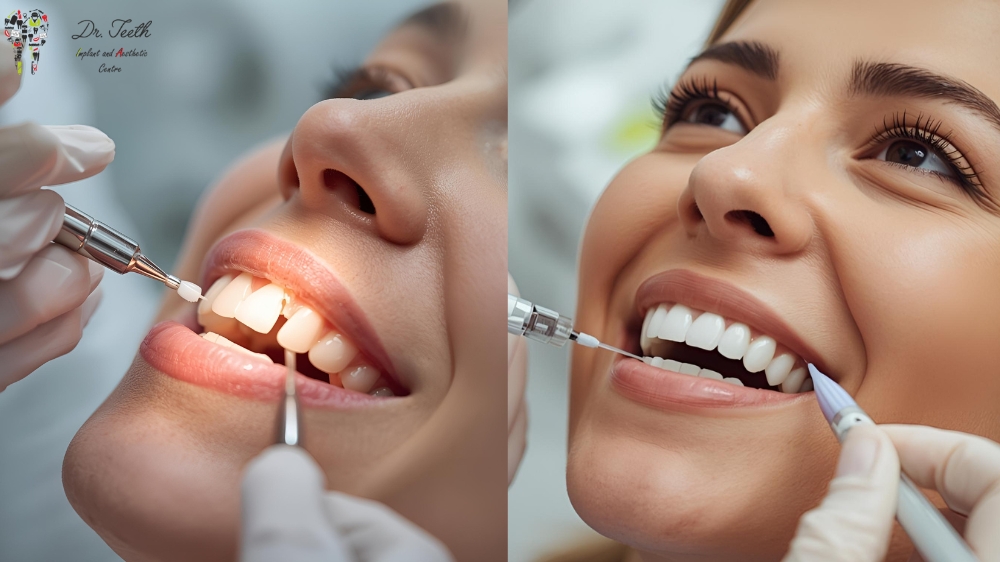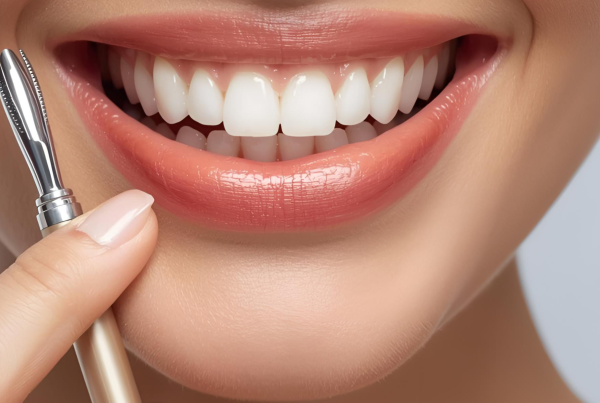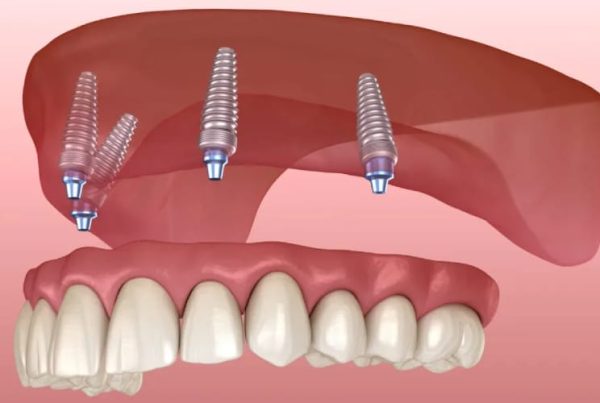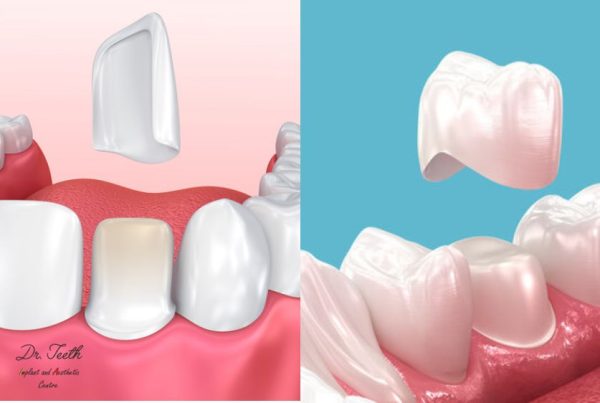A bright, confident smile can open doors both socially and professionally. But what happens if your teeth aren’t exactly picture-perfect? Imperfections, such as a minor chip from biting into something hard or an ugly gap between your teeth, can have an impact on how you feel about your smile. Luckily, contemporary dentistry has a fast, economical and successful solution: dental bonding.
In this blog, we’ll take a deep dive into what tooth bonding really is, how it works, the pros and cons, and why it might just be the perfect treatment for fixing chips and gaps in your teeth.
What is Tooth Bonding?
Tooth bonding (also known as composite bonding) is a cosmetic dentistry treatment. Your dentist will mould a tooth-colored resin (a tough plastic material) to mix in with your natural tooth.
The material is soft when applied. Once shaped, a special light hardens it in seconds. The result? A restored tooth that looks and feels like the real thing.
Bonding is one of the easiest ways to fix minor tooth issues. No lab work. No waiting for weeks. Most of the time, it’s done in just one visit.
Problems Tooth Bonding Can Fix
Bonding is versatile. Here are common problems it can solve:
- Small Chips and Cracks: A chipped front tooth is visible when you smile. Bonding can repair the fractured corner, making it look entire again. Cracks that don’t affect the tooth’s strength can also be hidden with resin.
- Gaps (Diastema Closure): Not everyone likes the gap between their front teeth. Bonding can fill it in with a natural-looking finish, without braces or aligners.
- Uneven Edges or Tooth Length: Teeth wear unevenly, resulting in jagged edges or mismatched lengths. Bonding evens out the edges and balances the form.
- Stains or Discolouration Not Removed by Whitening: Teeth that do not react to whitening treatments frequently owing to medication stains, can be concealed with bonding material that matches the natural tooth colour.
The Tooth Bonding Procedure
- The process is simple and usually painless. Here’s what happens:
- Preparation: The tooth is cleaned. No drilling is needed unless decay is present.
- Shading: The dentist picks a resin shade that matches your tooth.
- Application: The surface of the tooth is lightly roughened. A liquid is applied to help the resin stick.
- Shaping: The dentist molds the resin into the right shape.
- Curing: A special light hardens the resin within seconds.
- Finishing Touches: The tooth is polished until smooth and shiny.
It usually takes 30–60 minutes per tooth. There’s little to no pain, so anesthesia is rarely required.
Benefits of Tooth Bonding
- Improves Appearance
Tooth bonding can fix chipping, cracks and discolouration, giving teeth a smoother, brighter appearance. It instantly improves your smile with a natural finish that blends in with your existing teeth. - Quick and Easy Procedure
In contrast to crowns and veneers, bonding normally only requires one dentist visit. It is a simple chairside procedure with little downtime, so you can walk out with results the same day. - Minimally Invasive
Typically, only a small amount of enamel is removed throughout the operation. This retains your natural tooth structure while increasing looks. - Cost-Effective
Compared to veneers, and crowns, bonding is an affordable cosmetic solution. It provides noticeable results without a heavy price tag. - Versatile Application
Bonding can fix gaps, reshape teeth, and restore worn edges. It’s a multi-purpose treatment that addresses both cosmetic and functional issues. - Painless Treatment
Usually, no anesthesia is needed unless treating a cavity. This makes the procedure comfortable and stress-free for most patients. - Boosts Confidence
A flawless smile improves self-esteem in personal and professional interactions. The natural-looking finish helps you feel more comfortable while smiling or speaking.
Limitations & Risks
While tooth bonding offers many advantages, it also has some limitations and risks. The material used is not as strong as natural teeth or alternatives like crowns and veneers, making it more prone to chipping, staining, or wearing down over time. Bonding may also require periodic touch-ups or replacement, and it may not be suitable for severe dental issues or heavy bite pressures. Proper care and good oral hygiene can, however, help extend its lifespan.
Longevity & Maintenance
Bonding typically lasts 3-7 years, though it can last longer with proper maintenance. Longevity is determined by habits such as nail-biting, chewing ice, and grinding teeth. Regular dental checkups and professional polishing help it last. Using a night guard also protects against wear if you grind your teeth at night.
Tooth Bonding vs. Alternatives
Bonding vs Veneers: Veneers are more durable and resistant to stains but they are more expensive and necessitate the removal of some enamel. Bonding is both affordable and reversible.
Bonding vs Crowns: Crowns cover the whole tooth and add strength. They’re best for badly damaged teeth. Bonding is ideal for small cosmetic fixes.
Bonding vs Orthodontics: Braces or aligners move teeth into place. Bonding just masks the gap or unevenness. For minor issues, bonding works well. For bigger alignment problems, orthodontics is the right call.
Cost of Tooth Bonding
In the US, bonding costs around $100–$400 per tooth. In India, it’s usually ₹2,000–₹7,000 per tooth. The price is based on the number of teeth treated, the intricacy of the case, and the dentist’s experience. Insurance often doesn’t cover cosmetic bonding unless it’s for a broken or damaged tooth.
Who is an Ideal Candidate?
Bonding is ideal for those with minor chips, cracks, stains, or gaps. Bonding is an excellent option if you want to improve your smile quickly, and affordably without undergoing permanent modifications. It’s not for serious dental issues, but it’s ideal for minor cosmetic difficulties.
FAQs – Tooth Bonding
- Does tooth bonding hurt?
No, tooth bonding is usually painless and doesn’t require anesthesia unless fixing a cavity.
- Can bonded teeth be whitened?
Bonding material does not react to whitening procedures, although it can be polished or replaced to get a brighter appearance.
- How long before I can eat normally?
You can eat immediately following the surgery, however it is preferable to avoid hard or sticky meals for the first 24 hours.
- Is bonding permanent?
No, bonding is not permanent. It usually lasts three to ten years, depending on care, habits, and dental cleanliness.
Conclusion: Is Tooth Bonding Worth It?
Tooth bonding is one of the simplest methods for repairing chips, cracks, gaps, and stains. It’s quick, painless, and economical. The results look natural and can boost your confidence right away.
If you’ve been hiding your smile because of small flaws, bonding may be the answer. Talk to your dentist to see if it’s right for you.












